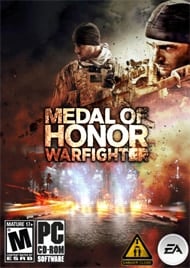In Pursuit Of Variety
2010’s Medal of Honor reboot was the game that moved the traditionally World War II series into the modern age. It did so, at the very least, with its setting and visuals. That doesn’t really speak to the title’s gameplay, which was, at least in single-player, hamstrung by painfully obvious scripting that created a less-than-compelling experience. The most infamous example is an early sequence in which the player is instructed to keep an enemy from lighting a signal fire. The enemy, despite being in plain sight (and the player armed with a sufficiently powerful rifle to make the shot), is incapable of being damaged until after he has thrown the object that lights the fire.
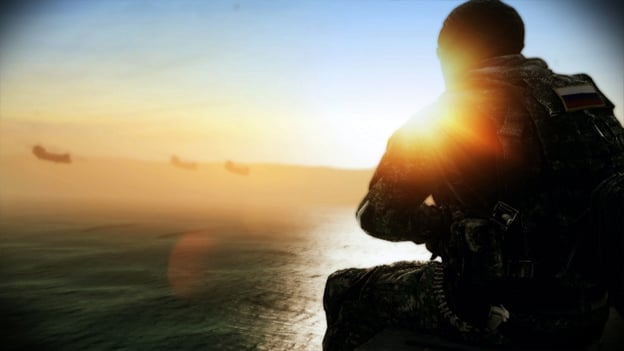
So, no, it wasn’t a particularly well-crafted campaign. Rough and jagged around the edges, its single-player was constructed on the ubiquitous Unreal Engine 3, while its multiplayer mode used EA’s in-house Frostbite 1.5, which resulted in a game as schizophrenic as it was archaic. Sitting down with Medal of Honor: Warfighter’s single-player campaign, my thoughts immediately went to the faux pas of the previous title, my critical eye engaged.
First, though, the technical: Medal of Honor: Warfighter uses the Frostbite 2 engine in both campaign and multiplayer. For the unfamiliar, that’s the engine that powered DICE’s visually stunning Battlefield 3. This is a gorgeous engine that allows for believably deformable terrain. That, in turn, leads to cover sometimes decomposing while you’re hiding behind it. I’m all for that.
My time with the game’s campaign was limited to two missions, one a fairly standard run-and-gun ordeal (broken up by a few minor set pieces to vary it up a little) and another that was, in essence, a single extended set piece. I kind of hate that I have to use the term “set piece” so much in describing modern shooters, but given that the core of a shooter is just positioning yourself, aiming, and pulling the trigger, it’s become a genre in which the component in which you’re not shooting other people has to be “justified” by a degree of spectacle.
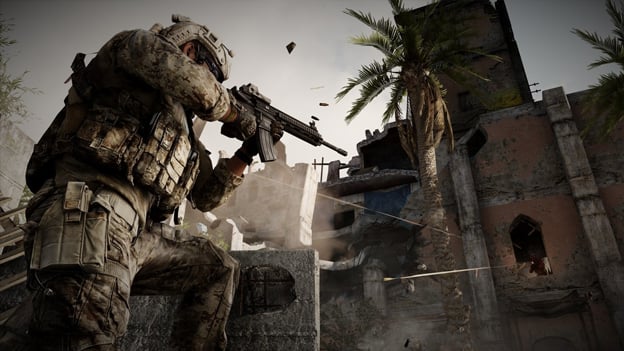
That was how I found myself setting down in Somalia, taking on violent pirates in “Shore Leave,” in which I controlled newcomer “Stump.” We landed on a beach, and I immediately found myself flashing back to Medal of Honor: Allied Assault’s Normandy landing. But ’twas not to be. Rather than a blockaded coastline with machine guns ripping through soldiers as they departed landing craft, I scuttled onto the shore and hid behind cover while a few pirates tried to pick my crew and me off from afar. After gunning them down, we made our way into a building and I was introduced to the breaching mechanic.
If you’ve played a recent Call of Duty game, this is similar; you or your teammate busts open the door and you have a few seconds, in slow motion, to gun down the enemies in the room before they can open fire on you. Warfighter, though, allows you to choose what method you’d like to breach by. These are primarily aesthetic, though there are, according to one of the representatives on-site at the preview event, benefits to some of the higher-tier breaching methods, which involve the use of powerful explosive charges that can either grant you more time to clear the room or even take out a few of the enemies for you. Additional methods are initially locked, unlocked by getting enough cumulative headshots during breaches.
If “Shore Leave” was any indication, this shouldn’t be a problem; there were four or five breaches in that one demo level.
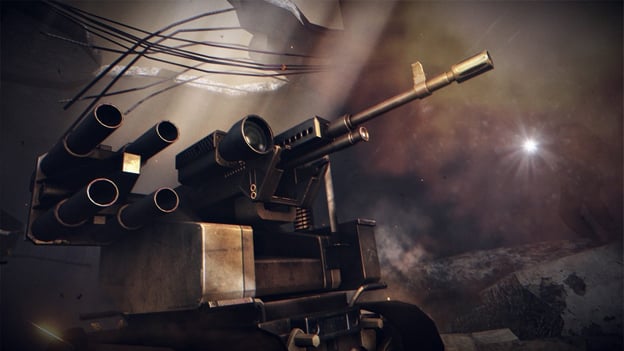
Other tidbits designed to break up the shooting: there was a segment spent at the controls of a ground-crawling drone, “navigating” debris and picking off enemies with its machine guns or explosive ordnance. The pathway it followed wasn’t always clear, but was linear enough that just pushing in the general direction I hoped to go was usually sufficient to guide me forward. After the drone’s demise (not sure how scripted this sequence was), I was moved from that diversion to more shooting. A few deaths quickly showed me that the action is largely hard-coded. Enemies will show some degree of self-preservation, but they’re going to spawn in the same places and generally attack you at the same points each time.
The level culminated in a sniping sequence. Again, this was fairly heavily scripted, though it did force me to appreciate the level of detail put into the game’s physics. Bullet drop was actually enough of an issue that I had to compensate for it, and the game was kind enough to provide me with the tools to do so, such as enemy distances and a drop scale in the scope. I wish it had been a bit more explicit about that, though, because it took me a few good attempts to realize why I was missing; in general, the game seemed to occasionally bewilder me by not providing an obvious progression, which is frustrating in such a linear game.
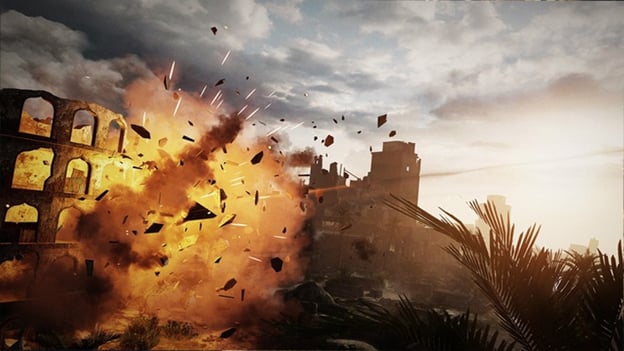
After Stump’s mission, I found myself plunked down into Preacher’s shoes (a veteran of the last Medal of Honor game) in a level called “Hot Pursuit.” The name is a not-so-subtle nod to the Need for Speed series, which is appropriate given that this level is a driving one and was, in fact, built with the aid of EA Black Box, who most recently handled Need For Speed: The Run. The controls were intuitive and responsive, in that even from the first-person perspective, mistakes made never felt like they were due to the game treating me unfairly. That said, the sequence as a whole is a largely scripted chase scene, culminating in a minute or so of attempting to ram the escaping vehicle. It’s a definite shift from the core shooting mechanics, and I imagine will serve to break them up well (it’s certainly one of the most lovingly crafted secondary gameplay modes I’ve ever seen), but it felt like a bit of an odd choice to fill up fifty percent of our single-player game-time with a one-off driving level.
The greatest challenge for Medal of Honor: Warfighter is going to be distinguishing itself from Call of Duty: Black Ops II in a way that is both positive and meaningful. For what it’s worth, in my limited time with the campaign, it felt a lot less like I was wasting time in enemy alleys, watching waves of foes gunned down by my squad as I occasionally contributed a kill or two until we could safely advance. Skirmishes are smaller in Warfighter, and rely more on the player to carry their weight in combat, which is, to me, more satisfying in the end. We’ll see if it carries through in the rest of the game.
Game Features:
